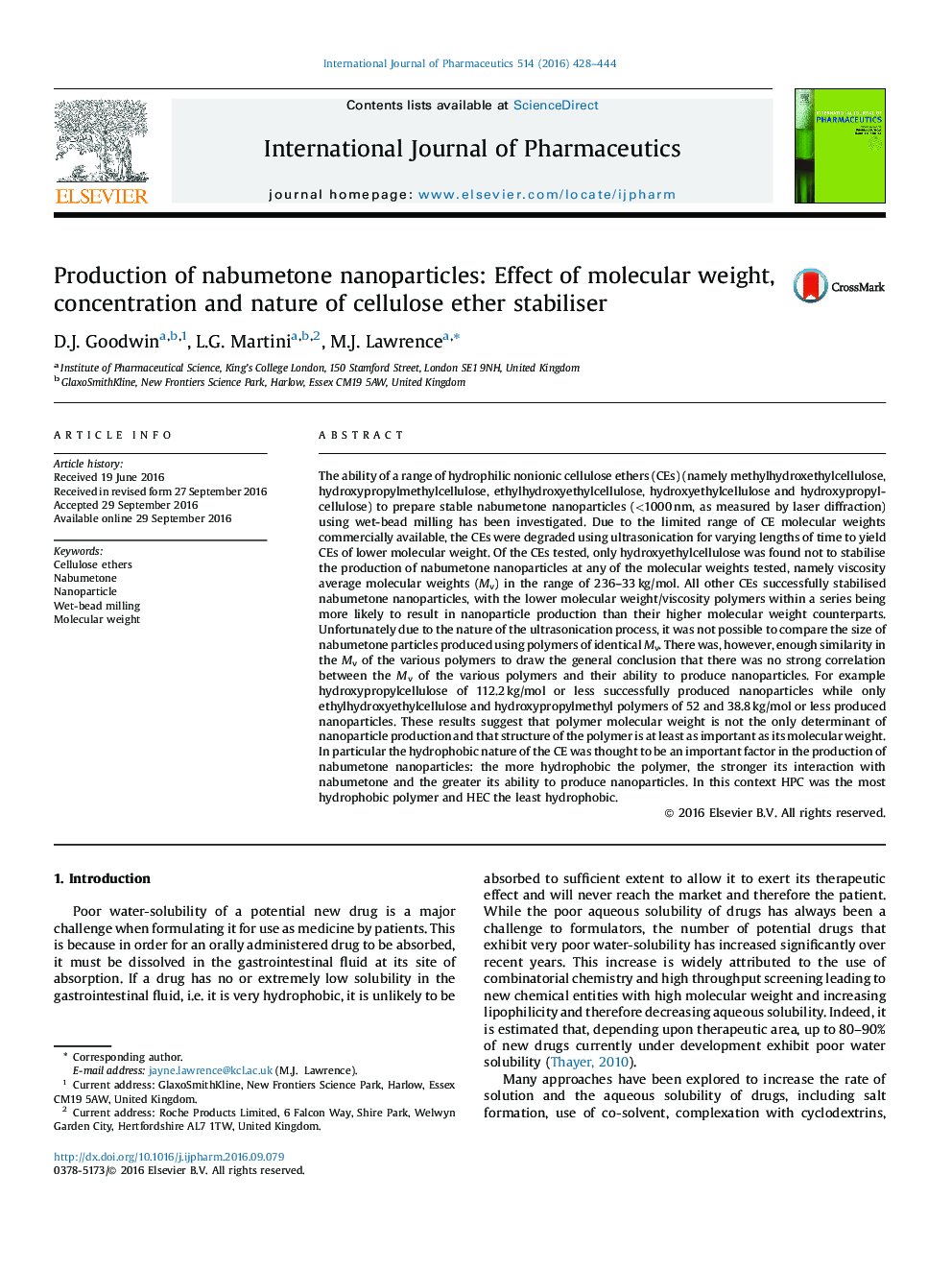| کد مقاله | کد نشریه | سال انتشار | مقاله انگلیسی | نسخه تمام متن |
|---|---|---|---|---|
| 5550832 | 1557303 | 2016 | 17 صفحه PDF | دانلود رایگان |

The ability of a range of hydrophilic nonionic cellulose ethers (CEs) (namely methylhydroxethylcellulose, hydroxypropylmethylcellulose, ethylhydroxyethylcellulose, hydroxyethylcellulose and hydroxypropylcellulose) to prepare stable nabumetone nanoparticles (<1000Â nm, as measured by laser diffraction) using wet-bead milling has been investigated. Due to the limited range of CE molecular weights commercially available, the CEs were degraded using ultrasonication for varying lengths of time to yield CEs of lower molecular weight. Of the CEs tested, only hydroxyethylcellulose was found not to stabilise the production of nabumetone nanoparticles at any of the molecular weights tested, namely viscosity average molecular weights (Mv) in the range of 236-33Â kg/mol. All other CEs successfully stabilised nabumetone nanoparticles, with the lower molecular weight/viscosity polymers within a series being more likely to result in nanoparticle production than their higher molecular weight counterparts. Unfortunately due to the nature of the ultrasonication process, it was not possible to compare the size of nabumetone particles produced using polymers of identical Mv. There was, however, enough similarity in the Mv of the various polymers to draw the general conclusion that there was no strong correlation between the Mv of the various polymers and their ability to produce nanoparticles. For example hydroxypropylcellulose of 112.2Â kg/mol or less successfully produced nanoparticles while only ethylhydroxyethylcellulose and hydroxypropylmethyl polymers of 52 and 38.8Â kg/mol or less produced nanoparticles. These results suggest that polymer molecular weight is not the only determinant of nanoparticle production and that structure of the polymer is at least as important as its molecular weight. In particular the hydrophobic nature of the CE was thought to be an important factor in the production of nabumetone nanoparticles: the more hydrophobic the polymer, the stronger its interaction with nabumetone and the greater its ability to produce nanoparticles. In this context HPC was the most hydrophobic polymer and HEC the least hydrophobic.
51
Journal: International Journal of Pharmaceutics - Volume 514, Issue 2, 5 December 2016, Pages 428-444